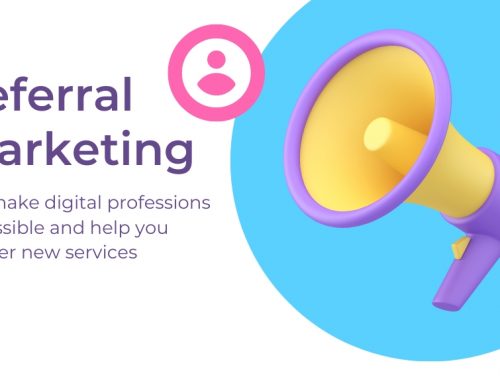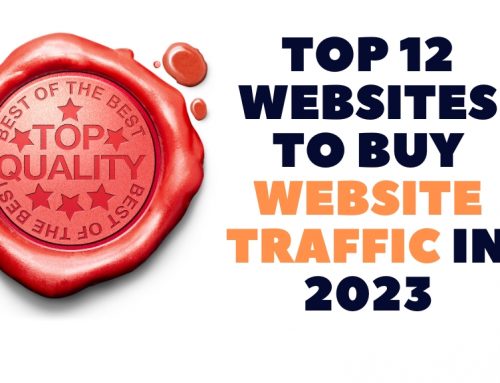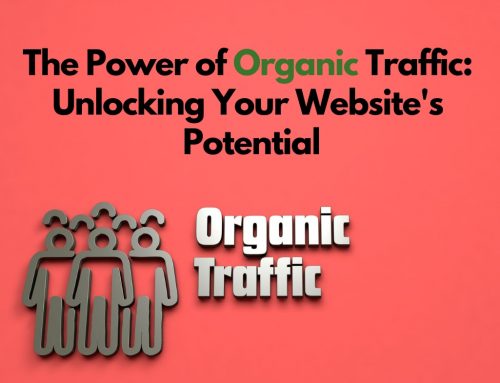pop up, High conversion rate or site destruction?
What Is Pop Traffic?
In this article, we want to talk about the pain of users who hate pop-ups.
In some sites, from the moment you enter the site until your work is finished and you intend to leave the site, an ad will appear on the door and wall of the site. A message pops up traffic on the left, a banner bar suddenly drops from the top, when you feel comfortable that everything is safe and secure and you are reading an article, a message pops up in the middle of the page asking us to rate it! Just when you are on the run and you want to close the page and leave, another window opens suggesting you join the site! What could be worse?
But wait!
Nothing is so bad as long as it is misused. These annoying pop-ups can have the highest conversion rates. So before judging, read the rest of the article to introduce this type of ads to you and tell you about their pros and cons.
What is a pop-up?
A pop up is an online ad that usually opens in a smaller, separate window from the home screen and is exposed to users. These windows often contain an offer or advertisement that suddenly appears on the screen to attract the user’s attention. I’m sure you now understand what messages we are talking about, because it is in front of your eyes several times a day.
Note that the name of this ad is not pop-up at all, and it is called pop-up; The name of the windows that appear is modal or the same Persian module, intermediate pages and things like that. But in the USA, we call everyone pop-up ad, so don’t be too sensitive about its name!
Pop-up ads have no standard size, sometimes appearing as a small window in the corner of the page; Sometimes they are full screen and take up the entire page you are reading.
As we said in the introduction, these messages, while containing attractive suggestions, can ruin the user experience! Even the maker of these modules himself admits this!
The creator of pop up apologized to the people!
In the mid-1990s, Ethan Zuckerman, as a designer and programmer at tripod.com, was working on a design that would show a targeted ad based on the page a user entered.
The programmer introduced pop-up ads, which soon became widespread; It is interesting to know that Mr. Zuckerman later apologized for this invention and admitted that it is the most hated propaganda tool! It seems that various sites with irrelevant and annoying pop-ups are running on Zuckerman’s nerves, otherwise pop-up ads, if used by hand, is one of the ads that gets a lot of clicks and attracts the reader’s attention. Do not accept? Now I will explain to you with an example how useful and attractive they can be!
Pop-up ads are not always hated
Suppose you want to learn about reporting and learn from writing to publishing. The first way you do a Google search is “What is ad reporting?” And you will notice the new blog article. You enter the article and start reading.
As you scroll, a separate module pops up on the screen that offers a free ad reporting book that teaches you everything from what it is to writing and publishing a report. Weren’t you looking for that? Now you can easily download the free book and read it whenever possible.
This becomes a timely pop-up ad that eliminates the need for the user to search through a series of tedious searches for each piece on a website. So, the goodness and usefulness of pop-ups depends on whether you use these ads in the right place, with the right content and related to the page where the user is. This is a new blog popup that is displayed in digital marketing articles for the user.
Let’s get acquainted with the types of pop up ads.
Types of pop-up ads
Pop-up ads are divided into 4 categories based on runtime, each of which is used for specific messages and suggestions; In the following, we will introduce these 4 categories.
Pop-up upon arrival
This message is displayed at the moment the user enters the site and covers the entire page for the audience to read. This means that the incoming ad will appear before it sees the screenshot of your site.
If you want to surprise an intrusive user to taste the annoyance, pop up login is the best option for this! It seems that Mr. Zuckerman should have made a separate apology to the public for this one.
So, you have to be very careful in choosing this one because it has a high risk.
Suppose a user comes to your website to read an article, the page has not loaded yet, they see a message that says come and subscribe to our newsletter! If you have not yet seen what is on your site and your content is useful or not! This can lead to a bad user experience for the user. Be aware that a sudden bad experience on arrival can also lead to a sudden exit, and you certainly do not want this to happen.
So where can these messages be used?
Messages that are shown to the user at the first login for privacy or confirmation of user age (for sites with age restrictions) are one of the applications instead of incoming pop-ups.
Pop-up when leaving
Output pop-ups are almost like inputs and maybe just as disgusting! But know that they are extremely powerful! Because some of them can stop the user from going and keep it on your page! What could be better than this? Note that when the reader of your blog is reading a useful article, the focus is on the same article, he may not see around the page and do not pay attention to the link at the top of the page, the product demo and the rest of your articles; Naturally, they are now singers, not buyers!
But with an ad that appears when they leave the site, you can easily get their attention. How?
At the very moment when the user wants to leave the site and Google Analytics counts your bounce rate, you encourage him to stay with an offer and your offer may even be so attractive that it becomes a customer! Analytics now records a conversation for you instead of a bounce rate.
In fact, the purpose of outbound ads is to tell the user, “Wait a minute, I’ll give you a reason to stay, I’ll make you interact more with me!”
Here is an infographic that shows the features of a good output pop-up.
Click popup
In this method, when the user clicks on a link, the module is displayed before entering the new page. It is better that this message is related to the landing page to have the most impact.
It is true that click pop-ups sometimes surprise and annoy the user but know that it usually has a good conversion rate! Do not be surprised, because your user has already shown interest in the topic and you can use this opportunity to submit your suggestions.
That’s why most e-shops use this method to show their product, which is in the form of a slide or video. Let’s take an example:
For example, you have entered Digikala and you want to buy sports shoes. When you click on the sports category link, a pop-up will open offering you great discounted shoes! Don’t you look at them first?
The second reason clicks are powerful is because it keeps the user on the page. For example, in the middle of the article, you suggest downloading the new free eBook. The user clicks on the link! Instead of being sent to another page, a box opens for him to deliver the book to him by email.
If he wanted to go to another page and go back to the main page, it would be a little hard work, will download the book with one click. So, it is not uncommon for pop-ups to replace landing pages, unless you need to give the user a lot of information. And the third reason for its power is that they open only when the user requests, provided that the message displayed is not unrelated to the subject of the user’s request.
Scroll pop-up
This type of ad is displayed to the user when he scrolls the page. You specify where the new window will open. For example, if you want to suggest him to subscribe to the newsletter, it is better to let it reach the bottom of the page and then pop up. Or, for example, the user is reading an ad reporting article, when he reaches the link building section in the report, the pop-up link building book will be displayed for him.
Time-based pop-up
This message is displayed when the user enters your site and stays there for a while. You can specify that the 10th, 30th or 60th second of the ad module open for it. From now on you can test at what time you have the highest conversion rate.
Some sites have said that the time to show ads on blog pages is not less than 30 seconds (from the moment the user logs in) and on product pages is not more than 60 seconds.
How do I put a pop-up on my site?
If you want to put one of the pop-ups on your site, the first way is to code from scratch and programmatically let the system know where and how to run this code. But there is a shorter and easier way. You can easily run all these pop-ups and settings with the Tag Manager in a few clicks.
With this tool you can determine when, where and when the ad will be advertised to the user. For example, when a user scrolls 50% of the page, an ad appears.
This is just one of the applications of this Google Tag Manager. You can read about the capabilities of this powerful tool on the Tag Manager course page.
In pop-up ads, follow a few tips
If you want to have an effective pop-up, be sure to follow the following 4 rules.
- The timing of this ad is very important for the visitor, if your ad is displayed too quickly when the user logs in, because he still does not know what the story is, he may hit the exit button and continue working. If it is displayed too late, the user may leave the page and you will miss the opportunity to do so.
- Design the pop-up so that the user can close it easily; This means that the exit button of the designed module must be clear and distinct. No one likes to spend their precious time finding the cross button.
- How many times does a window appear? If your ad is displayed more than once per user, be careful! Because you may annoy the user with your annoyance and give him a runaway.
- The Call to Action button (ad that you want the user to do) Your ad should catch the user’s attention and have great text.
- Test! Nothing works better than experimenting with this method! If your pop up is always ignored, change it. Yes, we say try, because a model that works for another company or site may not work for you. If you cannot test and measure, it is better not to use grandparents at all.
What effect does pop-up have on SEO?
Google does not usually comment on a specific topic, but it does state its position on the pop-up and states in an official text what it thinks about the modules.
Google says, respect users and make it easy for them to access the content and find the content they are looking for. On the same account, sites that use interstitials on mobile are penalized. Let’s first see what Google means. Intermediate Message is a full-page pop-up that appears before the main content.
You see? Google has not talked about all the pop-ups and has problems with the categories that appear when the landing page is opened, even when the user is logged in from the search page and still does not know the main content.
Google did not mention the following in its guide:
- Pop-ups displayed on desktop and tablet
- Small pop-ups that take up enough screen space
- Popes who carry out legal responsibilities, such as asking about cookies, security, and verifying a user’s legal age
- Windows that do not open immediately
What Can Pop Under Advertising Be Used For?
There will be times when some assume pop marketing isn’t for them. For example, those that operate in the adult industry may see little point in offering pop advertising for video games and vice-versa.
However, the fact of the matter is that these two categories can overlap a lot within an online environment, so it’s important not to be dismissive in relation to pop advertising.
So how does pop up affect SEO?
These ads may not have a direct impact on SEO, because Google does not count it as the content of your site, but by changing a number of factors, it leaves it mark on SEO. In the following, we will explain its effect on several important SEO factors.
User experience
It is true that marketers and webmasters are very interested in pop-up ads and making money this way, but unfortunately users have the opposite opinion; According to surveys, 80% of users hate these ads.
So, what does their hatred have to do with site SEO?
You know that in most Google algorithms, user behavior comes first, and the user shows his annoyance with his behavior on the web.
For example, suppose a user enters your site, you immediately ask him to register on your site with a message! If the appearance of this message is annoying to the user, he may leave the site and return to the search page. If this happens over and over again to other people, Google will not be able to meet the user’s needs, so you are not very trustworthy.
Otherwise, a bad user experience of your site will form in the user’s mind and he may not return to your site.
Site speed
In the article Speed of the Site, we said that Google has been emphasizing the importance of page load speed for several years and has published a lot of research in this regard. They even provide webmasters with the tool google page speed insight to evaluate and optimize their page load speed. Poppies increase site load time, especially if you have heavy or animated images on it.
Although Google Webmaster Analyst Gary Alice says this effect is not great, SEOs still pay attention to it and optimize it in various ways.
A user who was supposed to read your content and see different pages of your site has now left the site due to annoying pop-ups. This behavior certainly reduces the average time a user stays on the page.
This does not mean that all pop-ups have a negative effect on the SEO of the site, some of them appear so timely that it keeps even the user who wants to leave to follow your attractive offers.
Where to Start with Pop-Up Networks and Pop-Under Traffic?
There’s nothing in place that dictates that pop-up traffic is better than pop-under or vice versa, it’s simply about finding an approach that works for the business.
The success of the ads can also depend on what website they’re being use on.
As well as having their own approach to advertising, those looking to benefit from pop-up networks and pop-under traffic, every advertiser will have their own preferences in relations to the platform being used.
The following is an overview of the options available in relation to pop traffic networks.
- RevenueHIts
• TargetedWebTraffic
•SEO25.com
Despite pop traffic not being as attractive as some other forms of media buying, it still has part to play when it comes to uniting businesses and customers, and in some instances can be more successful then more conventional forms of advertising.
Conclusion
Now you know that pop-ups are like a double-edged sword; They can also be very annoying and nerve-wracking, disrupting all of your site’s applications; They can also attract the user and get a high conversion rate; It all depends on where, when and with what content they are used. (Like the first example of the article).






